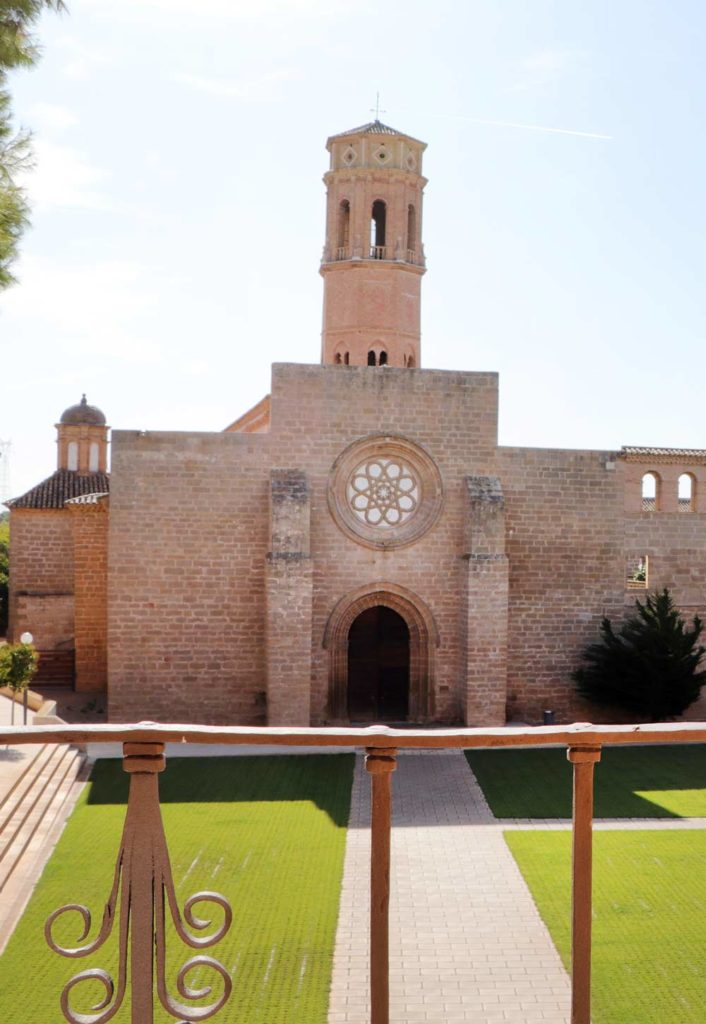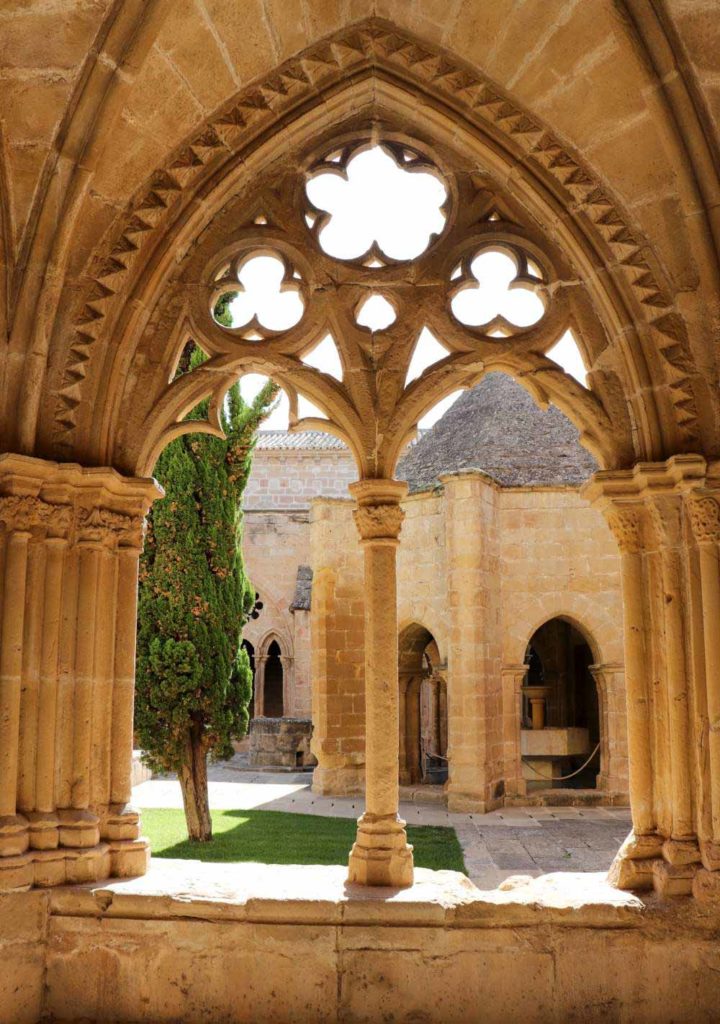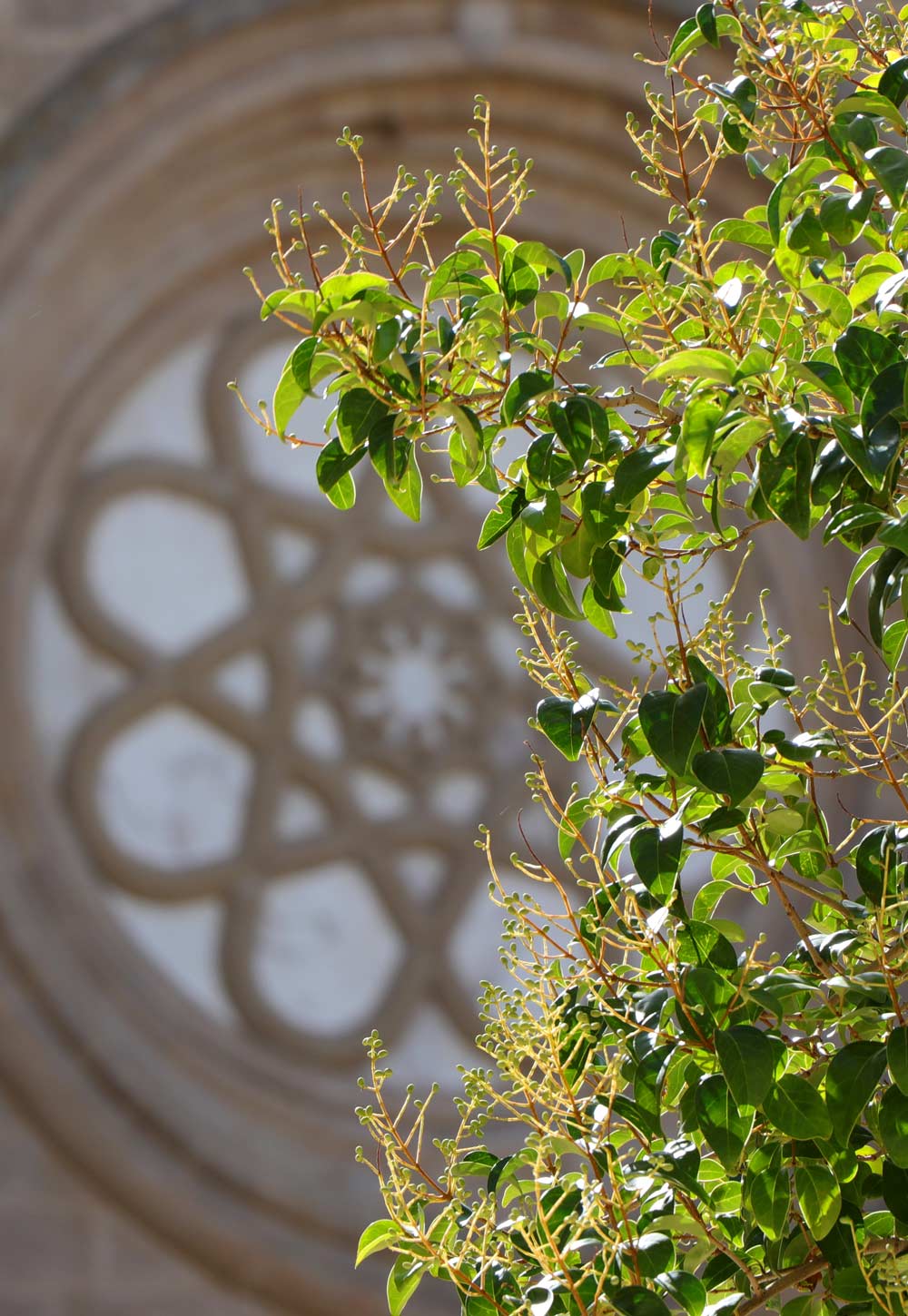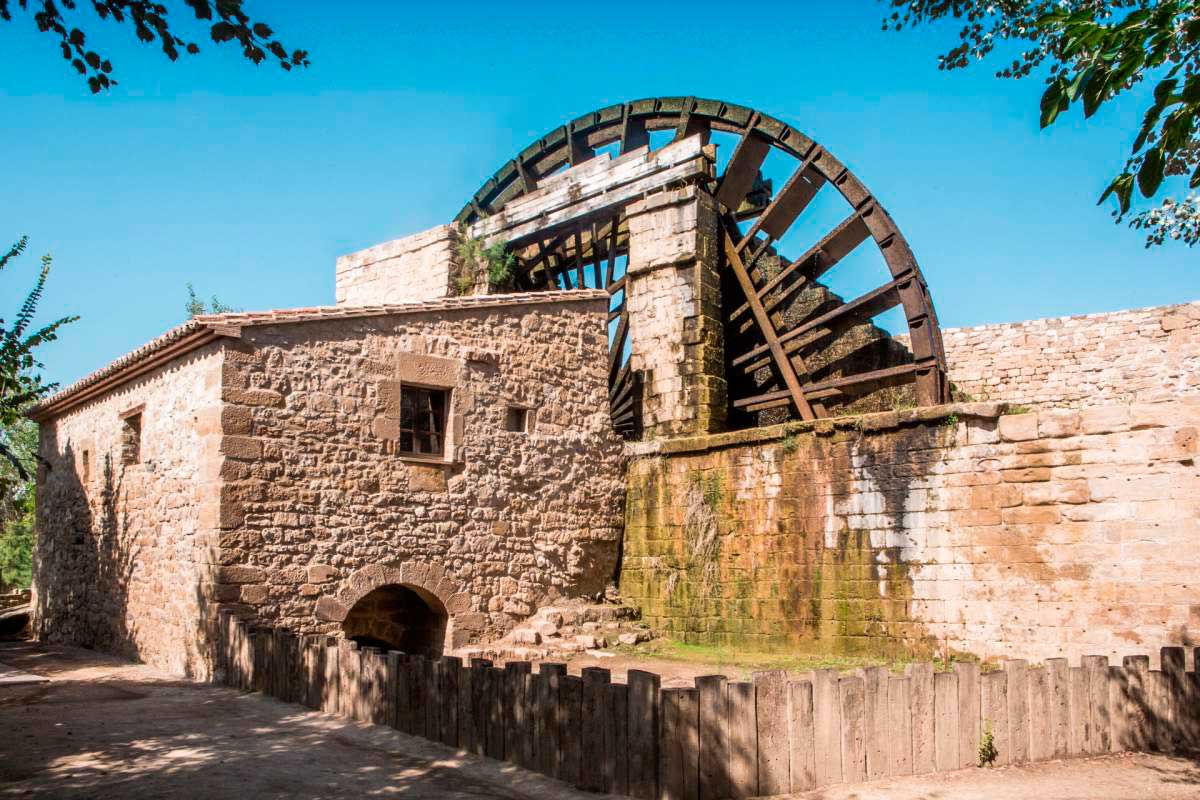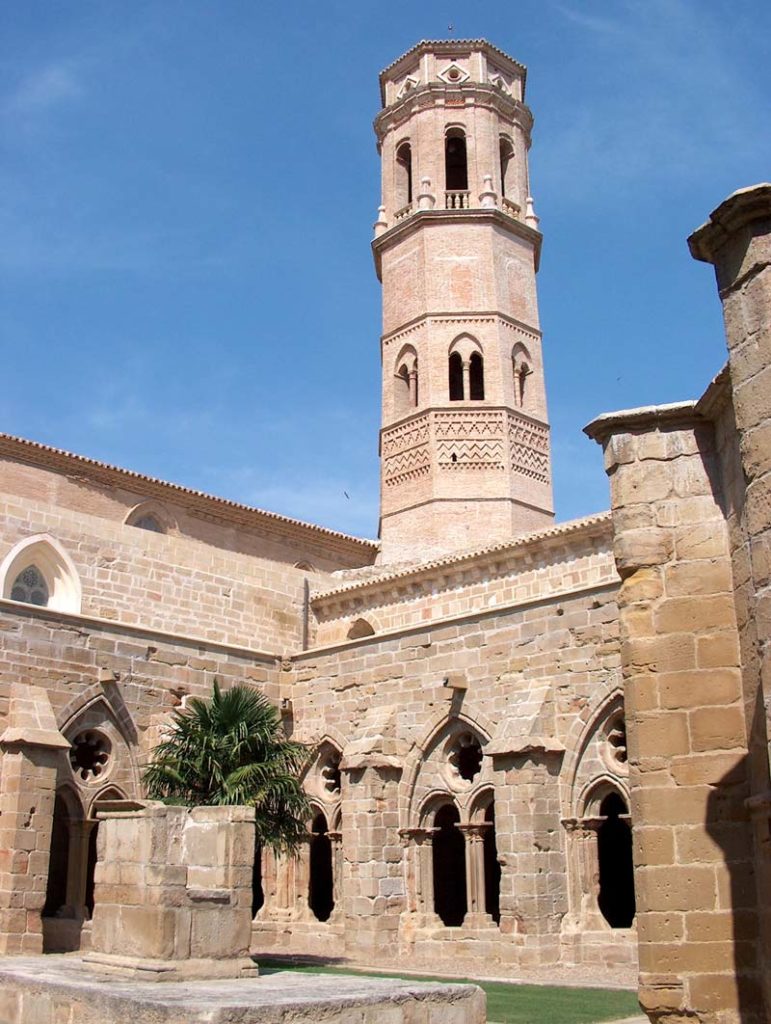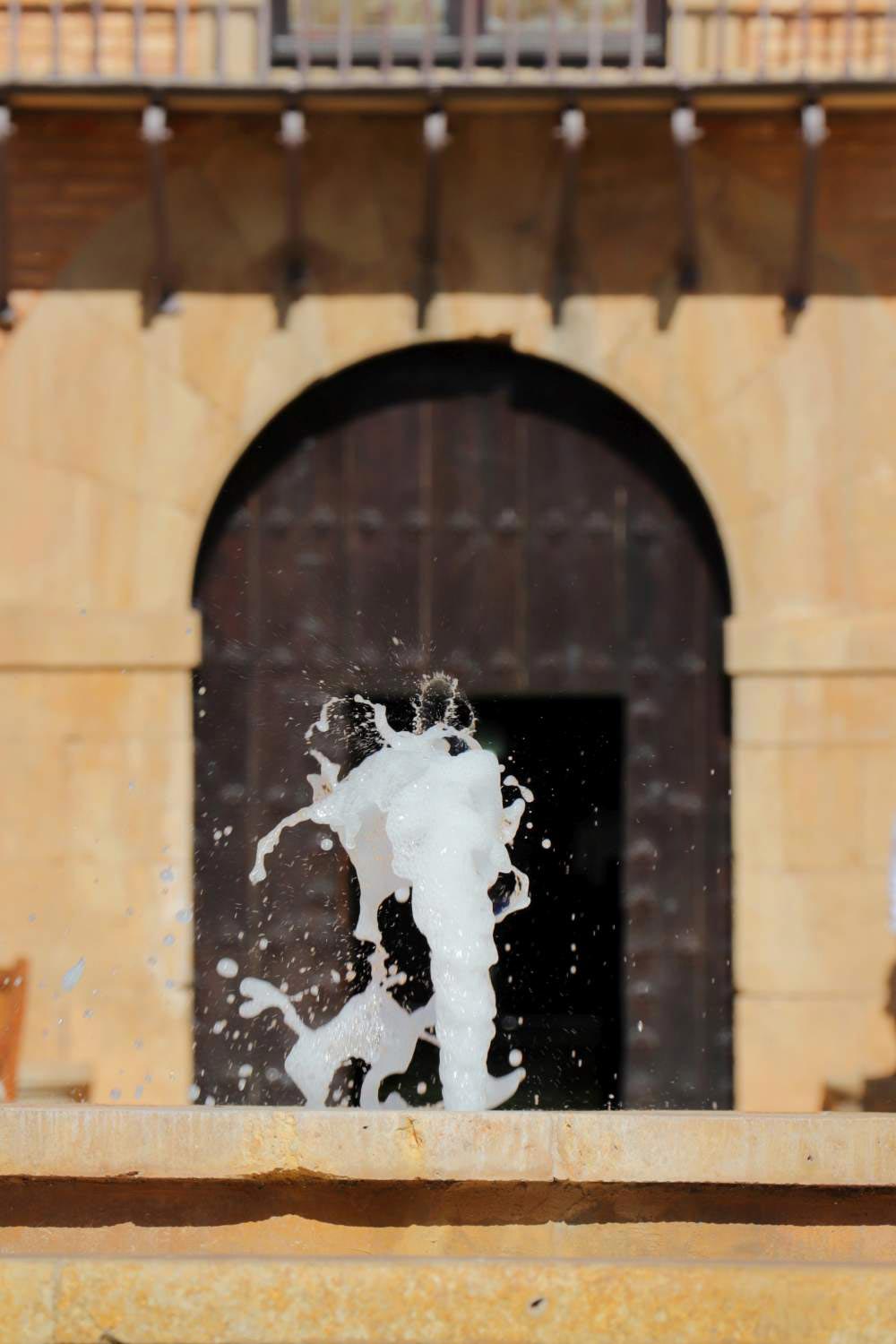Royal Monastery of Rueda
The Monastery
In the town of Sástago, on the banks of the Ebro River, stands the superb monumental complex of the monastery of Rueda, one of the greatest exponents of the Cistercian order in Aragon. You will be dazzled by the austerity of its church, its Gothic cloister, its slender Mudejar tower and the large waterwheel of 18 meters in diameter that gives its name to the monastery.
The Royal Monastery of Nuestra Señora de Rueda
sits on the banks of the Ebro River, between the noble towns of Sástago and Escatrón.
Ora et labora, work and prayer
The monarch Alfonso II, in 1182, granted the town and the castle of this last enclave to the Cistercians, so that the monks soon began the construction of the monastery, being in 1202 when the works officially began and in the year 1238 is the consecration of the temple. The works lasted until the 14th century, when the medieval construction of the complex was completed and its slender Mudejar tower was raised.
The enclave is ideal for the Cistercian monk, the renovatio of the spirit, as dictated by the Rule of St. Benedict and the revitalization of its essence; that is, the search for humility and purity through Ora et labora, (work and prayer), in his daily life.
The Cistercian order bases its life on prayer and the cultivation of the land, for which they make use of the water that irrigates the fertile fields. Rueda is not an exception: its unique waterwheel complex, together with the aqueduct and the canals, which centuries ago accompanied the daily life of the monks with the murmur of water, are still with us today.
In terms of its architecture
The Monastery of Rueda maintains this Cistercian condition of humble architecture, far from the ostentation of Cluny.
Architecture
Successive enlargements in the 17th and 18th centuries extended around the monastery
Leaving the primitive medieval nucleus intact, while the monks’ cells, the spectacular Herrerian gallery and the abbey palace gave shape to the Plaza de San Pedro, forming today’s monumental entrance.
In 1836, with the disentailment of Mendizábal, the religious periplus of the complex culminated to be reconverted into a building with agricultural and livestock functions. Finally, in 1998, the ownership of the building was transferred to the Diputación General de Aragón and 2003 was the key year for its restoration.



